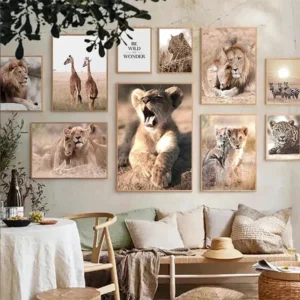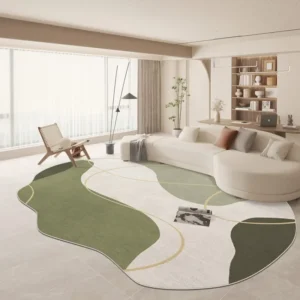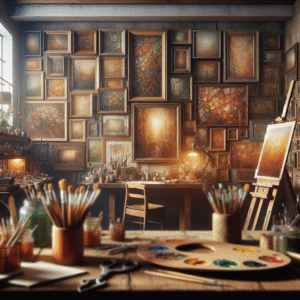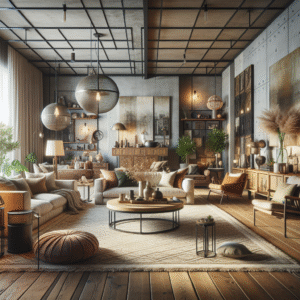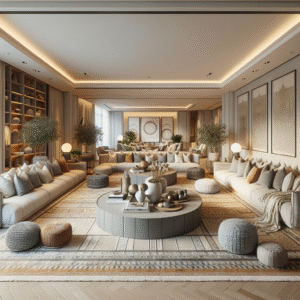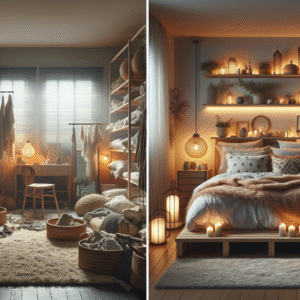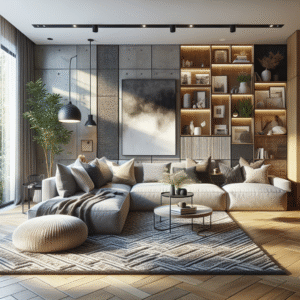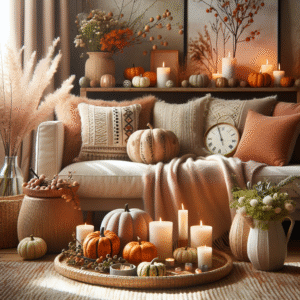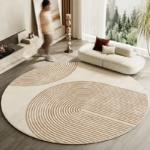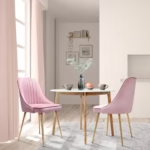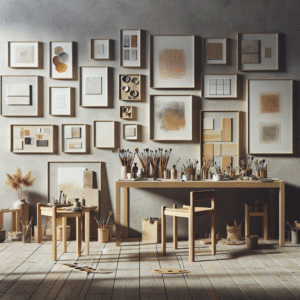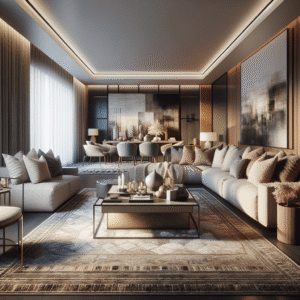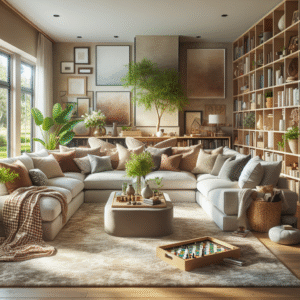Mastering the Art of Gallery Walls: A Guide to Mixing Frame Styles with Flair
Creating a stunning gallery wall can transform any space, but mixing frame styles can feel daunting. This guide will help you understand how to combine different frames with flair, ensuring your gallery wall stands out. You’ll learn essential tips, creative ideas, and practical steps to implement your vision.
In this article, we will explore:
- Understanding the basics of gallery walls
- Choosing frames strategically
- Color theory and frame styles
- Arranging your gallery wall
- Case studies and real-life examples
- FAQs and troubleshooting common issues
Understanding the Basics of Gallery Walls
Gallery walls can turn a blank space into a captivating visual story. By combining various art pieces and frames, you have the power to express your personality and aesthetic taste. But before we dive into style mixing, let’s cover the foundation.
What is a Gallery Wall?
A gallery wall is a display of multiple framed artworks, photographs, or other decorative items that are arranged on a wall to create an eye-catching feature. The concept has gained popularity in home and office decor due to its flexibility and personal touch.
Benefits of Gallery Walls
- Enhances visual interest in any room
- Allows personal expression through art
- Can be easily updated or changed over time
- Creates a focal point and sets the mood
Choosing Frames Strategically
The frames you choose significantly impact the overall aesthetic of your gallery wall. Here are some tips for selecting frames that work well together, yet create a dynamic look.
Frame Styles to Consider
Frames come in a myriad of styles, including:
- Traditional: Ornate and decorative, suitable for classic art.
- Modern: Sleek and minimal, great for contemporary pieces.
- Rustic: Often made from distressed wood, perfect for a warm, homey vibe.
- Eclectic: A mix of styles can create a unique statement.
Mixing Frame Colors and Textures
When mixing different frames, consider the overall color palette of the room. Below are some effective strategies:
- Harmonize Colors: Use frames that share a color or finish for unity.
- Texture Play: Combine wood, metal, and fabric for depth.
- Mix Sizes: Utilize a variety of frame sizes to add visual interest.
Color Theory and Frame Styles
Color theory plays a pivotal role in design, and understanding it can elevate your gallery wall’s impact. Each color conveys emotion and can change how a space feels.
Complementary Colors
When pairing frames, consider using complementary colors. For example, a deep blue frame can beautifully contrast with a warm orange painting, creating a striking effect.
Consistent Themes
Establish a theme such as monochrome, vibrant, or neutral. Each theme will guide your choices and ensure cohesion across your gallery wall.
Arranging Your Gallery Wall
Once you’ve chosen your frames, the next step is to arrange them on the wall in an aesthetically pleasing manner. Here are proven layouts to consider:
Grid Arrangements
The grid layout is perfect for structured presentations. This involves aligning all frames to form an even grid. It works well in spaces where you want a formal look.
Salon Style
The salon style is a more casual, clustered arrangement. This approach is all about layering and can include oversized and small frames mixed together.
Spacing Considerations
Maintain consistent spacing between frames. A common rule is to keep 2-4 inches between frames to ensure they feel cohesive yet distinct.
Case Studies and Real-Life Examples
Let’s explore a few examples of successful gallery wall designs from real homes:
Case Study 1: Urban Apartment
A couple in a New York City apartment created a gallery wall in their living room using a mix of black and gold frames. The variety in frame styles, paired with a curated selection of black-and-white photographs, brought sophistication and character to their modern space.
Case Study 2: Family Home
A family-friendly home featured a playful gallery wall in the kids’ playroom, incorporating colorful frames and a mix of art styles, from drawings to printed posters. This approach fostered creativity in the space.
FAQs about Gallery Walls
What size should my gallery wall be?
The size depends on your wall space. As a rule of thumb, a gallery wall should take up about 60-75% of the wall space it occupies.
How do I hang frames without damaging the wall?
Consider using adhesive picture hangers or command strips, which allow for easy removal and should not damage the paint when taken off.
What if I want to change the art frequently?
Using frames with a front-loading design can simplify changing pieces out without needing to rehang everything.
How do I choose art for my gallery wall?
Select art that resonates with you. Mix various mediums and styles for a dynamic look, and keep your color scheme in mind.
Can I mix frame styles and colors?
Absolutely! Mixing styles adds personality and interest. Aim for a cohesive theme while allowing for variety.
Conclusion & Next Steps
Mastering the art of gallery walls requires creativity and confidence, but with these insights, you can develop a display that enlivens your space. Remember to play with frame styles, colors, and arrangements until you find what feels right for you.
For more inspiration, check out our articles on home decor tips and building your art collection.
Content Disclaimer
The information provided in this article is for educational purposes only and should not be considered professional advice. For personal recommendations based on individual circumstances, please consult a relevant expert.
Categories
- Accent Walls & Ceilings (10)
- Art Curation & Gallery (25)
- Bedding Style Trends (41)
- Bedroom Makeover (30)
- Bohemian & Eclectic Styles (10)
- DIY & Budget-Friendly Decor (9)
- Eco-Friendly Design (10)
- Furniture Care (29)
- Home Decor & Design Ideas (101)
- Home Wellness Spaces (10)
- Integrated Outdoor Living (9)
- Kids and Nursery Decor (10)
- Living Room Decor (30)
- Minimalist & Japandi Style (13)
- Mix & Match Techniques (29)
- Modern & Contemporary Design (9)
- Rug Sizing & Placement (29)
- Seasonal Home Decor (32)
- Small Space Solutions (14)
- Wall Art & Painting Tips (32)
Recent Posts
Recent Comments
Archives
Product Gallery
-
 African Grassland Animal Scenery Poster Autumn Canvas Painting Lion Zebra Giraffe Prints Pictures for Modern Home Room Decor
African Grassland Animal Scenery Poster Autumn Canvas Painting Lion Zebra Giraffe Prints Pictures for Modern Home Room Decor
-
 Large Area Green Rugs for Bedroom Nordic Living Room Decoration Shaped Carpet Irregular Plush Lounge Rug Home Thick Washable Mat Rated 5.00 out of 5$57.07 – $359.83Price range: $57.07 through $359.83
Large Area Green Rugs for Bedroom Nordic Living Room Decoration Shaped Carpet Irregular Plush Lounge Rug Home Thick Washable Mat Rated 5.00 out of 5$57.07 – $359.83Price range: $57.07 through $359.83 -
 Nordic Style Rugs for Bedroom Morandi Living Room Decoration Carpet Large Area Geometry Lounge Rug Home Cloakroom Non-slip Mat Rated 5.00 out of 5$40.98 – $620.81Price range: $40.98 through $620.81
Nordic Style Rugs for Bedroom Morandi Living Room Decoration Carpet Large Area Geometry Lounge Rug Home Cloakroom Non-slip Mat Rated 5.00 out of 5$40.98 – $620.81Price range: $40.98 through $620.81





